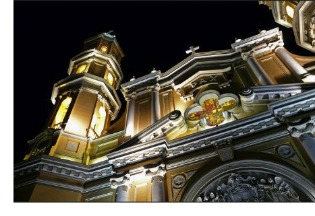| En Español |
Home |
Search |
Nobility |
Trees |
Sources |
Articles |
|
How You Can Help
 Thank you for your interest in the genealogy of the Seminarios and related families. There are two ways to help: (1) participate in a research project already underway, such as the Pizarros or the Four Italian Families, and help finish what remains to be done, or (2) start a new research project. You don't have to ask permission to join a research project, just do it. If you are interested in the first approach, I recommend reviewing, under the Trees option, the tree of the family that interests you. At the bottom of the page, there is a brief summary of the state of the research. Using the links in the tree, you can access the pages of each person in the lineage to see what we know and the documents we have. Finally, under the Articles option, a "status of the research" article provides a detailed description of the known facts and the questions or issues that need to be resolved. If you are interested in the second approach, you can research anyone in the database. There are more people who might be of noble descent - for example, Gaspar de Valladolid Angulo. He came with the conquerors, helped found Tangarará, the first Spanish settlement in Peru, and held a royal land grant in Piura. Or there is the De Los Rios lineage, starting with Isabel Jaime De Los Rios. Is it possible to connect her to Pedro De Los Rios, the Royal Governor of Panama? Your research doesn't even need to be limited to a person in our database, just to a Seminario relative born between 1400 and 1800. Manuel Joseph Seminario had 10 children. I have two of them in the database and have researched the lineages of only one of them. Cipriano Seminario Calderón had 11 children, and I have researched only one. The relatives of the other children have an equal chance of being of noble descent. What I've learned from studying the matter is that, in the two centuries after the Conquest, Peru's high society was a small and closed group. It included the captains and other officers among the conquerors, the top officials of the viceregal civil administration, and the land grant holders and estate owners. The Seminarios moved and married within this group. Some of the group were from the nobility, as these families were given preference by the king and royal court. So there are multiple possibilities for finding connections to the nobility. If you are concerned that you need to know Spanish to do research, that is an issue, since most of the historical information and almost all of the documents are in that language. You will need a reading knowledge of Spanish. But it doesn't have to be perfect. I've done a lot of research and am actually pretty much Spanish-challenged. You may not think so from my translations on the site, but I did them with the Spanish-English dictionary in hand and lots of help from native speakers. Whatever information, documents or graphics you find can be submitted via email. I will incorporate your information into the database, so that it appears on an individual's page when you do a search, and also into the research status reports. We will credit you by name on our Recognition page. If you send us a document that someone else found, e.g., your grandfather, we will credit grandpa for finding the document and you for sending it in. If you prefer to submit something anonymously, we'll respect your preference, but please let me know. If you have any questions or concerns, please
contact me by email. Thanks for your help!
|